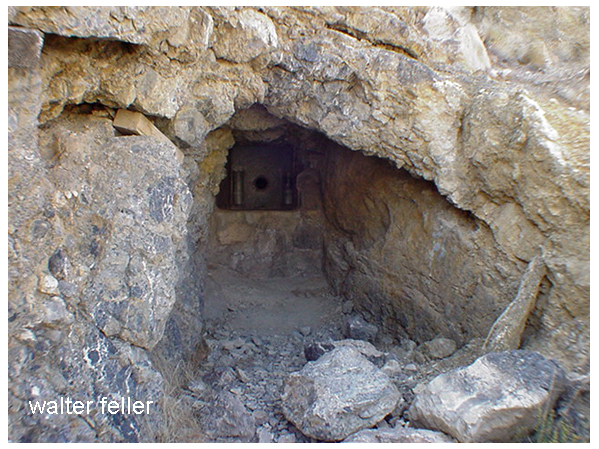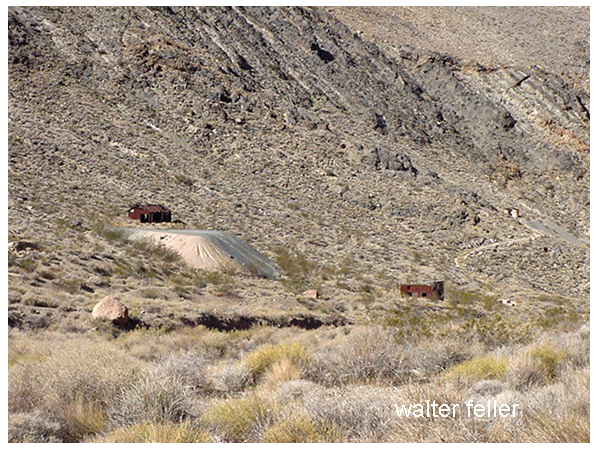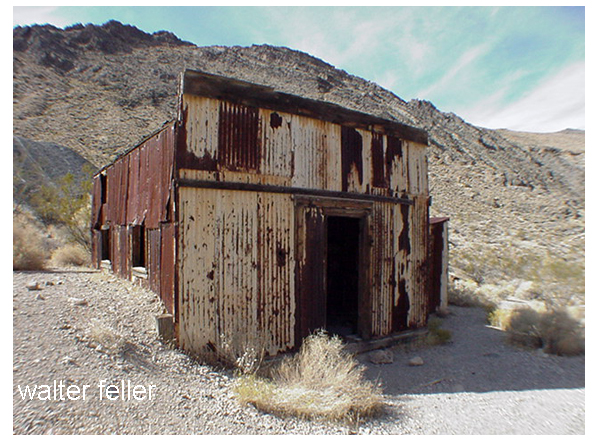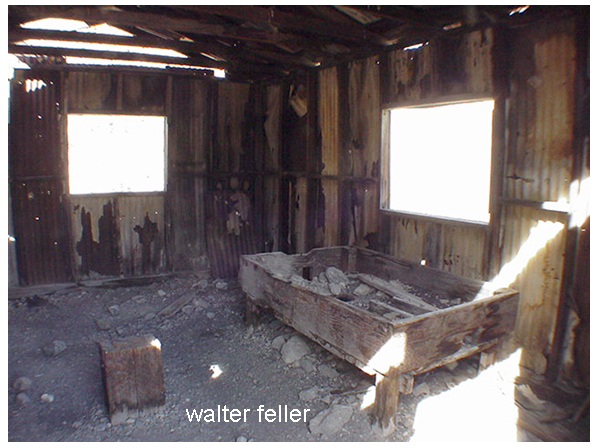by Betty J. Tucker – Desert Magazine April, 1971
(photos – Walter Feller)
The road and scenery through Titus Canyon in Death Valley produces all the ups and downs of a young love, then steadies out into the young matronly area. Further on, it matures and gains
the stature of sedate old age.

Titus Canyon Road
That’s a pretty good life span for a mere 25 miles. The only problem is that occasionally heavy rains rip out the road, so be sure and check with the rangers. Trailers cannot be taken on this road and I wouldn’t recommend trucks and campers, although we saw one go through. At times the high center of the road forces you into some creative driving.We did it in a dune buggy.
The road into Titus Canyon leaves the Beatty Road and crosses the desert between the Bullfrog Hills and the Grapevine Mountains. Then it begins to climb. This road is one way and it is easy to see why. The steep uphill grades and sharp hairpin curves are not conducive to meeting oncoming traffic. There was that thrill of a first young love—the frightening steepness and sheer drop-offs, but still so breathtakingly beautiful that I wasn’t even afraid. The dune buggy has such a short wheelbase it takes the sharpest corners with ease.
After cresting at Red Pass, elevation 5,250, we dropped down into a beautiful green valley. Here, nestled comfortably in the yellow flowered brittle bush was the ruins of Leadfield.

He blasted some tunnels and liberally salted them …
This child was the brainchild of C. C. Julian who would’ve sold ice to an Eskimo. He wandered into Titus Canyon with money in mind. He blasted some tunnels and liberally salted them with lead ore he had brought from Tonopah. Then he sat down and drew up some enticing maps of the area. He moved to usually dry and never deep Amargosa River miles from its normal bed.

Leadfield ghost town
He drew pictures of ships steaming up the river hauling out the bountiful ore from his mines. Then he distributed handbills and lowered Eastern promoters into investing money. Miners flocked in at the scent of a big strike and dug their hopeful holes. They built a few shacks. Julian was such a promoter he even conned the US government into building a post office here.

Leadfield post office
So for six months, August, 1926 to February, 1927, over 300 people lived here and tried to strike it rich. They dug and lost.
What remains of this fiasco is rather amazing to behold. It most certainly looks like the ghost of a prosperous mine. The false front, cream-colored, corrugated tin post office is still in good shape. There is a built-in wooden desk in some small shelves on the walls. Of the narrow trail there are two more lime green corrugated tin buildings.

Blacksmith’s shop – the wooden block for his anvil and coke bin
Near it is the blacksmith’s building. The wooden block that held his anvil is there as is the bin full of coke. Both of these buildings are lined with asbestos. There are several small holes where the miners tried to find the promised ore, plus a couple of rather large shafts.
2 1/2 miles below Leadfield is Klare Spring, the major water supply for the town. Miners stood there in frequent baths here and hold water back to camp. Beside this spring you will find Indian petroglyphs.

Klare Springs
We sat on a couple of sun warmed rocks and had a snack. The water trickled by any couple of ravens performed a spectacular air ballet for us. It was an easy to remember that Titus Canyon got its name through a tragedy.

Titus took half of the stock and went to look for more water.
In 1907, Morris Titus, a young mining engineer, and two of his friends, Mullan and Weller, left Rhyolite intending to cross Death Valley and do some prospecting in the Panamints. They found the waterhole dry that they had hoped to use. They had only 20 gallons of water for themselves, 19 burros and two horses. Eventually they found a hole where they could get a cup bowl every four hours. While Mullan and Weller waited, Titus took half of the stock and went to look for more water. He never came back. Next day Weller took the remaining stock and set out to look for Titus. He, too, disappeared. Mullan was found a month later and taken to Rhyolite, more dead than alive. As Titus was known to carry large quantities of gold with him, his family instigated an extensive search. No sign was ever found of him. Some thought he might have broken through a salt crust and gone into the mire below. Whatever happened, he has a most beautiful monument in having this particular canyon named after him.
~ end ~
Also see: